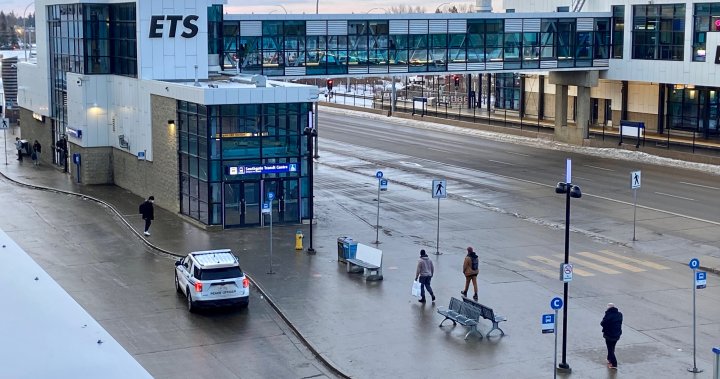buildings
Active Member
^^ yep Avenuer, all staged, crisis actors. ffs
How dare the criminals not take how this makes city council look into account!Funny timing these articles coming out just as Council starts budget deliberations…coincidence?
The timing of the stories was just funny with Budget starting this week, but it will be interesting to see if they (or other instances) are referenced at all during deliberations about EPS funding, peace officer funding, etc.How dare the criminals not take how this makes city council look into account!
According to the articles both these events happened in the last week, so I'm not sure you can really say the media are trotting out old stories for political purposes or anything.
I'm reviving an old discussion here, but this operating budget document gives an interesting detail. It looks like the timeframe Paquette mentioned was off, and there was some additional operational funding for a couple of specific uses, but: "The last time there was growth to conventional bus service was in 2012, when two service packages were funded. One service package increased off peak bus service, and the other service package funded the creation of the bus route to the Edmonton International Airport. Since that time there has been operating growth to support the Metro Line LRT operations, as well as growth to fund the Heritage Valley shuttle to Capital Line LRT that started in December 2020 - neither of which provide neighbourhood-level bus service hour growth. "Breakdown of these graphs:
Revenue hours/ Year- remained consistent
Revenue hours/ Capita- Decreased
Cost Recovery- Decreased
While is appears on the face that Transit isn't keeping up with growth, seeing a dip in cost recovery while maintaining revenue hours means that there was a ridership decrease.
What they didn't do was a graph on revenue hours per ridership
2014- 45.3 passengers/ service hour
2015- 43.8 passengers/ service hour
2016- 42.2 passengers/ service hour
2017- 42.7 passengers/ service hour
2018- 42.5 passengers/ service hour
2019- 42.3 passengers/ service hour
No surprise, these numbers align with the graph showing the decline in farebox recovery. So why did the population increase, but ETS ridership dropped? What was the root cause of that? Would tossing more money into more service get those riders back? Or would it just reduce the cost recovery ratio?
Over a longer timeframe of 2002-2019:
2002: 30.5 million revenue kilometers, 1.7 million vehicle hours, ridership 44.4 million
2019: 43.7 million revenue kilometers, 2.3 million vehicle hours, ridership 86.7 million
2002 population 700,000ish (data missing from CoE website)
2019 population 972,223
Population growth was 38.9%
Revenue kilometer growth 43.4%
Generally funding has kept pace with City growth over the long term. Certainly, service levels did stagnant in the 2014-2019 timeframe however, ridership did drop and importantly, service hours remained intact. I feel it is important to understand the root cause of that drop in ridership. Trust me. We did see lots of growth over the years. One particularly interesting time was 2007-2010 when Edmonton received 350ish new buses in a 3 year time span. The first 230 were supposed to replace the high floor buses, but into 2009 there were still upwards of 70-80 high floor buses. 2009's 121 new buses finally killed off the high floors plus expanded the fleet. On top of that the full length of the SLRT opened, and buses and service hours not used for LRT, remained with the bus network.
Additionally, this was under the old network. How will these metrics look under the BNR?
Already we have seen a increase in funding for Transit given that the BNR kept the same budget as the previous network had, so, when the money was put into On Demand that represented growth. It sounds like too that ETS might well get to keep the service hours from the 510x when the Valley Line SE LRT opens. That will represent further growth to Transit.
Theoretically, what would happen is that once TransEd is operating the Valley Line, ETS/ CoE would reduce the ETS budget by the 510x costs and allocate that towards the monthly payments to TransEd for operating the LRT line. The 510x costs wouldn't cover all of that, however, that means without it the City needs additional funding to pay TransEd.


That is really unfortunate :/Was in downtown today and saw 3 ppl sitting on the Corona LRT stairways smoking probably meth as I try to walk up. The pedway connecting Churchhill and City centre also had a person walking erratically kinda circling around and some people sitting on the side smoking or sleeping probably to stay away from the cold. Also, the other day, I saw a person in the LRT train that seems to be showing off a multi tool/switchblade sort of object to another person while popping up these white circular pills (probably opiods) and acting slightly unhinged which is probably the first time that I felt scared while inside an LRT train.
I still like taking the LRT, I know that they have already beefed up the security and they can't be everywhere at once, but these things still happen and I am not sure if theres anyway to solve these problems to make the LRT feel safer in the immediate term.






